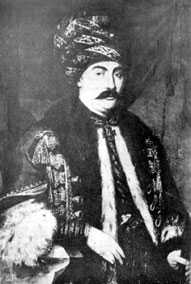Manuc's Inn
.jpg)



Manuc's Inn (Romanian: Hanul lui Manuc, pronounced [ˈhanu(l) luj maˈnuk]) was, until it was recently shut for restoration and refurbishment, the oldest operating hotel building in Bucharest, Romania; it also housed a popular restaurant, several bars, a coffee-house, and (facing the street) several stores and an extensive bar. Its massive, multiply balconied courtyard hosted many performances and fairs and was a popular place for Romanian television crews to shoot folkloric performances. The hotel and restaurant were closed down in 2007 for refurbishment;[citation needed] shops[citation needed] and a bar known both as Cafeaneaua Bucurestilor de Altadata ("Bucharest of Yesteryear" Cafe) and as Festival 39 remained open (though the bar closed in February 2010).[1] The hotel and restaurant are expected to reopen under new management once the restoration and refurbishment are completed.[citation needed] However, there appear to be disagreements between the city government and the owners about the legality of certain modernizations being undertaken.[2]
Location
The building is located at 62–64 strada Franceză (the street has been variously known in the past as Iuliu Maniu, 30 Decembrie, and Carol),[3][4][5] across the street from the ruins of the Old Court (Curtea Veche).[6] Although one side now faces a vast modern public square, Piaţa Unirii,[6] there is no evidence of this in the courtyard or the inward-facing rooms.[citation needed]
History
The inn was built in 1808, and originally owned by a wealthy and flamboyant Armenian entrepreneur, Emanuel Mârzaian, better known under his Turkish name Manuc-bei.[7] By the middle of the 19th century, it was Bucharest's most important commercial complex, with 15 wholesalers, 23 retail stores, 107 rooms for offices or living, two receiving rooms and a pub.[3]
Although Manuc's Inn has been subject to repeated restorations — in 1848, 1863, 1966–1970, and 1991–1992,[7] as well as the one now under way — its essential structure remains intact; of the three surviving 19th century inns in the Lipscani district,[8] it is the only one recently or currently in use as a hotel.[citation needed]
The inn was the site of the preliminary talks for the Treaty of Bucharest, which put an end to the 1806–1812 Russo-Turkish war.[7] In 1842 it briefly housed Bucharest's town hall.[7] Around 1880 a hall at the inn was used as a theatre, and was the site of the first Romanian operetta performance.[7]
Before Romania entered World War I, in 1914–1916, the hall "Sala Dacia" hosted meetings of the Wallachian pro-war party seeking to establish a Greater Romania by uniting with Transylvania and Bukovina; speakers included Nicolae Filipescu, Take Ionescu, Barbu Ștefănescu Delavrancea, and Octavian Goga.[7]
The building was nationalized 19 February 1949. Ownership was restored to Prince Șerban-Constantin Cantacuzino in February 2007.[3]
See also
- Hanul cu Tei
- Casa Capșa
- Treaty of Bucharest
Notes
- ↑ Festival 39 de la Unirii, una din cele mai cunoscute cafenele, s-a inchis, DailyBusiness.ro, 2010-02-12. Accessed online 2010-02-12.
- ↑ Hanul lui Manuc, un simbol al Capitalei, renovat in condiţii ilegale!, Pro TV, 2009-10. Accessed online 2010-02-12.
- ↑ 3.0 3.1 3.2 Hanul lui Manuc, restituit definitiv prinţului Şerban Cantacuzino, stiri.acasa.ro, 2007-02-27. Accessed online 2010-02-12.
- ↑ Hanul Manuc, Bucharest, Yahoo! Travel. Accessed online 2010-02-12.
- ↑ Bucharest: Hanul lui Manuc (Hotel), Lonely Planet. Accessed online 2010-02-12.
- ↑ 6.0 6.1 Map of location, Google Maps. The Old Court is labeled Curtea Domneasca. Accessed online 2010-02-12.
- ↑ 7.0 7.1 7.2 7.3 7.4 7.5 Manuc's Inn, rotravel.com. Accessed online 2010-02-12.
- ↑ The other two are Hanul cu Tei and Gabroveni Inn. A bit east of the Lipscani district is Solacoglu Inn.
External links
- (Romanian) Hanul lui Manuc, official site of the former hotel operation. Archived 2007-01-16 on the Internet Archive.
- The courtyard on a winter day
References
- Manuc's Inn, on the site of rotravel.com.
Coordinates: 44°25′46.40″N 26°6′7.38″E / 44.4295556°N 26.1020500°E